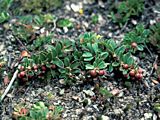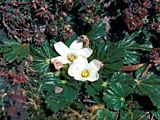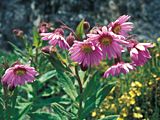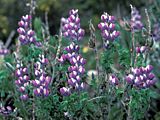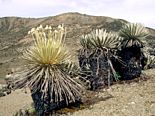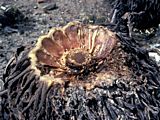Andes: Venezuela
The northern part of the S-American cordillera is relatively humid. Its uplands lack the dry interior and altiplano which is so typical of the southern Andes. Relicts of Polylepis sericea forests up to 4100 m indicate that much of today's "páramos" is man made (fire and grazing).
2 -
Arcytophyllum caracasanum
(Rubiaceae),
Espeletia schulzii
and
Valeriana pauciflora
dominate the páramos near the treeline.
5 -
Succulent
Echevaria venezuelensis
(Crassulaceae; see
Mexico) and
Castillea fissifolia
(Scrophulariaceae; see
Rocky Mts.)
in the background (4050 m).
9 -
Lobelia tenera
(Campanulaceae) (3900 m). Compare their giant relatives in
equatorial Africa.




